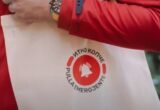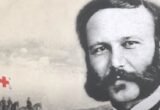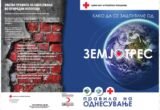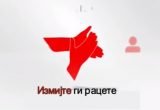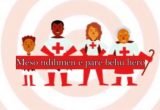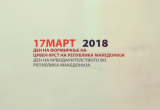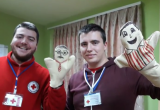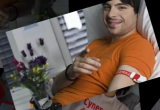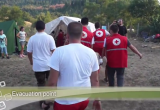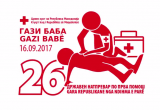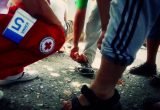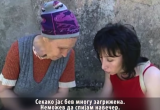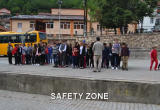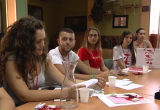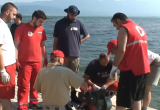Protection of the emblem
The Red Cross on white ground symbolizes the impartial and neutral assistance to persons that need it. Its purpose is to protect the victims and the people who are providing it.
The use and protection of the emblem is regulated with the International Humanitarian Law and with the national legislation of the Republic of Macedonia.
Macedonian Red Cross as member of the International Red Cross / Red Crescent Movement looks after the correct use and protection of the emblem.
Before the adoption of the Red Cross emblem the medical services of each army in Europe had their own symbol. For example, Austria used white flag, France red flag and Spain used yellow flag.
As a result of that, the medical services were not considered neutral, but as part of the combative units. Not only these symbols did not provide protection for the medical units but they were object of direct assault.
The idea was the emblem to mark not only the wounded people in battles and the ones who provide support but also all medical units, including the medical units of the enemy force in order make combatants refrain from attack and respect of those people.
The emblem – Red Cross on white ground was approved on the International Conference held in Geneva in 1863, and was officially adopted on the Diplomatic Conference in Geneva in 1864 and it is sanctioned in the International Humanitarian Law in the First Geneva Convention passed on this Conference.


International Committee of the Red Cross (ICRC).
Independent, neutral, impartial, humanitarian organizations, founded in 1863, promoter of the International Humanitarian Law. And it operates in times of armed international and internal conflicts.

Red Cross / Red Crescent National Societies
They operate in their respective countries with humanitarian activities in different programme areas.
Today, there are 186 recognized national societies

International Federation of Red Cross and Red Crescent Societies.
It was founded in 1919, and it endeavours to enhance the capacities of the National Societies for implementation of their activities in the area of Health and Social Care and Disaster Management.
Признати:

Red Cross on white ground in 1864, formed by reversing the Federal Colours of Switzerland as a compliment to Anry Dunant, the founder of the Red Cross.

Red Crescent on white ground in 1929.

Red lion and sun on white ground in1929 but it is not in use since no 1980.

Red Crystal on white ground in 2006
Во употреба:



Red Cross Red Crescent Red Crystal
The emblem is a symbol which has two different usages:
- – Indicative in times of peace, and
- – Protective in times of armed conflicts.
Indicative use marking:
- – Personnel, vehicles and facilities related to the International Red Cross and Red Crescent Movement;
- – International Committee of the Red Cross;
- – National Society;
- – International Federation of Red Cross and Red Crescent Societies;
- – Medical vehicles and First aid stations, under condition that the emblem is used in compliance with the national legislation and with the authorization of the national society.
When the emblem is used for indicative purposes it must be in a smaller dimension and it serves as a reminder that the components of the Movement work in compliance with the Fundamental Principles: humanity, impartiality, neutrality, independence, voluntary service, unity and universality
For this purpose, the emblem is accompanied by the name of the national society or its initials.
The members may bear the emblem only while they are performing some activity for the national society.
Protective role in compliance with the Geneva Conventions and the Additional protocols is related to:
- Medical and religious personnel, objects, vehicles and materials of armed forces;
- Medical units and transport vehicles of the national societies, which are used for support to the medical services of the armed forces;
- Persons, objects, transport vehicles and materials of the International Committee of the Red Cross;
- Civilian hospitals and other medical facilities recognized by the Government and with authorization to use the emblem;
- Other humanitarian organizations recognized by the Government with authorization to perform medical services.
When the emblem is used for protective purposes it must be displayed in its original form, that is, nothing must be added to the emblem. Since the emblem must be visible from big distances, it has to be of big dimension.
The misuse of the emblem for protected objects in time of warfare endangers the system for protection assigned with IHL
The misuse of the emblem for indicative use underestimates the image in the public and consequently decreases the protective power in time of armed conflict.
Each state signatory of the Geneva Conventions is obliged to undertake measure for prevention and punishment of any misuse of the emblem at any time and must concretely adopt a law for protection of the emblem.
Types of misuse:
- Imitation – Use of a symbol which form and /or colour may cause confusion with the emblem (example. Similar colours or design, sometimes for commercial purposes).
- Usurpation – Use of the emblem by unauthorised groups and persons (commercial firms, private doctors, pharmacists, nongovernmental organizations etc.) The use of the emblem by persons who are authorized to do so but they use it for purposes which are not in compliance with the Geneva Conventions and Protocols (example: used by somebody to easier cross the border when not on duty).
- Fraud – Serious and perfidious misuse of the emblem, when the emblem is used in time of armed conflict as a mean for protection of combatants or military equipment (example: medical vehicles or helicopters transporting combatants or for storage of ammunition. The perfidious use of the emblem is considered as a war crime both in international and internal armed conflicts.
Macedonian Red Cross Law regulates issues related to the use and protection of the Red Cross emblem in compliance with the Geneva Conventions.
Macedonian Red Cross implements activities for promotion of the role, proper use and protection of the emblem and indicates in situations of violations of the use of the emblem. During 2006 Macedonian Red Cross carried out a survey on examination of the use/misuse of the emblem, through the Red Cross Branches in the municipalities that they cover. The examination showed the factual situation in regard to the issue of use and protection of the emblem, that is, it indicated the need for permanent activities for promotion of proper use and proposing measure to the responsible authorities for prevention of the misuse of the emblem.
In 2007, Macedonian Red Cross organized a campaign for correct use of the emblem of the Red Cross in the Republic of Macedonia and protection from misuse of the emblem by unauthorized subjects, under the slogan “Symbol for respect”.



